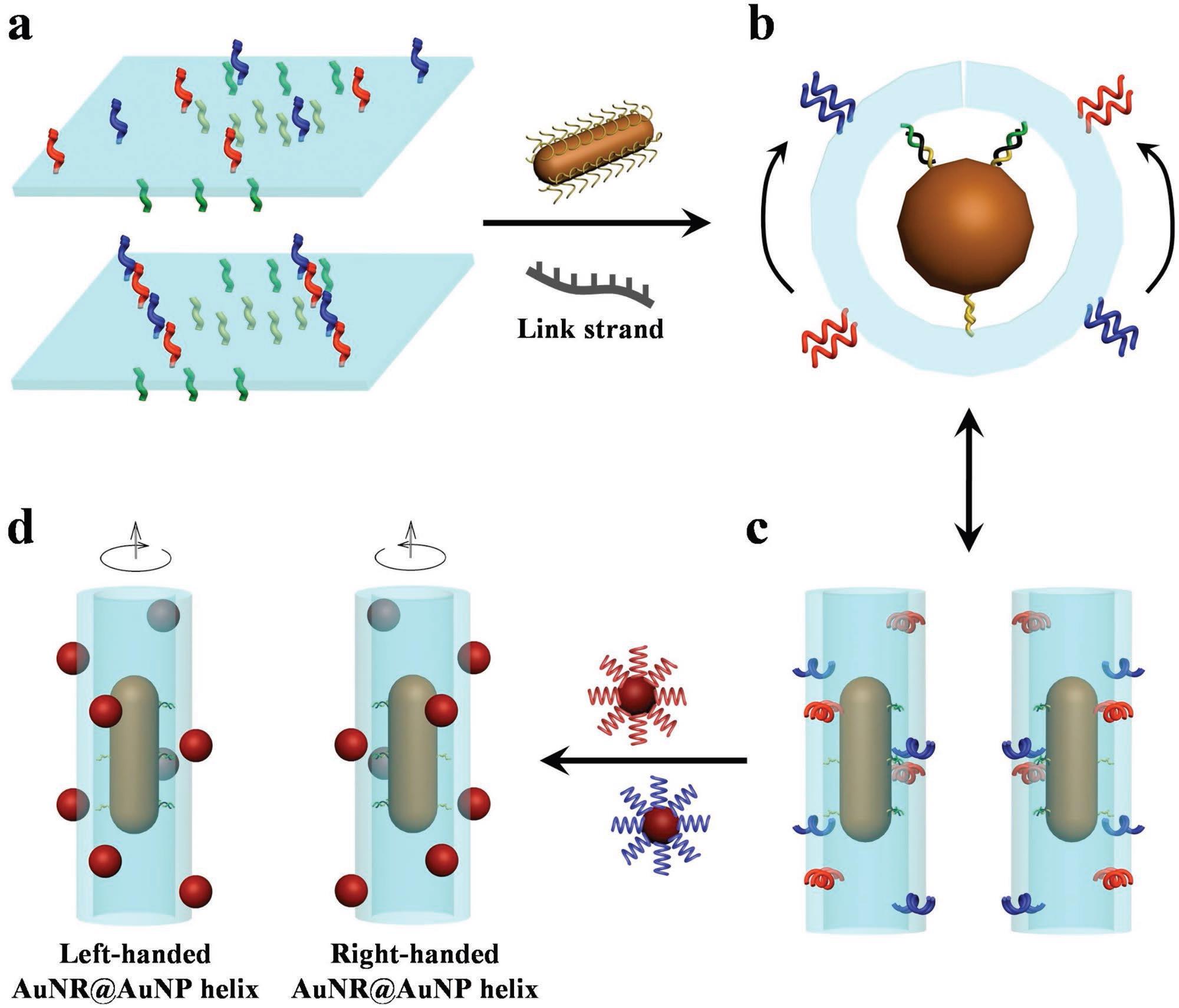Plasmonic nanoparticles and their assemblies have become prominent building blocks for widespread applications in nanotechnology. Accurate fabrication of regiospecific plasmonic assemblies is crucial for understanding the coherent interactions among constituent nanoparticles. Therefore, various surface modification strategies of plasmonic nanoparticles have been proposed toward their self-assembly in a prescribed and directional manner.
DNA nanotechnology with strong programmability and nanoscale addressability has greatly advanced the accurate functionalization of plasmonic motifs. It has been demonstrated that the surfaces of nanoparticles could be site-selectively functionalized by transferring the predesigned functionalities on the DNA origami to the plasmonic motif surfaces. In particular, fabrication of chiral plasmonic superstructures with novel chiroptical activities in visible frequency has received increasing attention due to their great significance in both fundamental chiroptical research and comprehensive application.
Recently, the Nano-Bio Interface research group led by Prof. Wang Qiangbin at Suzhou Institute of Nano-Tech and Nano-Bionics (SINANO), a research institute of Chinese Academy of Sciences (CAS), has developed a unique and effective strategy to pattern DNA recognition sites in a helical arrangement around a gold nanorod (AuNR), and a new set of heterogeneous AuNR@AuNP plasmonic helices is fabricated by attaching complementary-DNA-modified gold nanoparticles (AuNPs) to the predesigned sites on the AuNR surface.
In detail, AuNR is first assembled to one side of a bifacial rectangular DNA origami, where eight groups of capture strands are selectively patterned on the other side. The subsequently added link strands make the rectangular DNA origami roll up around the AuNR into a tubular shape, therefore giving birth to a chiral patterning of DNA recognition sites on the surface of AuNR. Following the hybridization with the AuNPs capped with the complementary strands to the capture strands on the DNA origami, left-handed and right-handed AuNR@AuNP helical superstructures are precisely formed by tuning the pattern of the recognition sites on the AuNR surface. This strategy of nanoparticle surface patterning innovatively realizes hierarchical self-assembly of plasmonic superstructures with tunable chiroptical responses, and will certainly broaden the horizon of bottom-up construction of other functional nanoarchitectures with growing complexity.
For more information on these chiral plasmonic superstructures, please refer to the new publication entitled “Spiral Patterning of Au Nanoparticles on Au Nanorod Surface to Form Chiral AuNR@AuNP Helical Superstructures Templated by DNA Origami” appeared in Advanced Materials. The theoretical simulation in this work was supported by Prof. ZHANG Wei from Institute of Applied Physics and Computational Mathematics. This work was supported by the National Natural Science Foundation of China (Grant Nos. 21425103, 21673280, and 11374039) and the National Basic Research Program of China (973 Program, Grant No. 2013CB632805).

Figure 1. Scheme of the DNA origami-guided self-assembly of AuNR@AuNP helices. a) A 2D DNA origami with predesigned recognition sites for AuNPs and AuNR attachment and link strand hybridization. b) Top view and c) side view of the spiral patterning of specific recognition sites on AuNR surface. DNA origami was wound into a tubular shape with AuNR encapsulated in the center by adding AuNRs and the link strands, meanwhile forming helical arrangement of eight recognition sites around the AuNR. d) LH and RH AuNR@AuNP helices were fabricated after adding AuNPs.(Image by SINANO)
Contact Information:
Prof.WANG Qiangbin,Suzhou Institute of Nano-Tech and Nano-Bionics,Chinese Academy of Science
Email: qbwang2008@sinano.ac.cn

